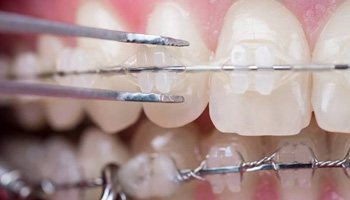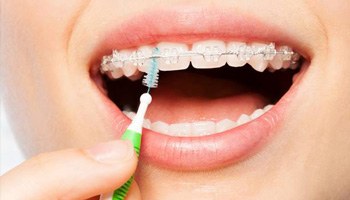Orthodontics FAQs – Danville, VA
How Exactly Does Orthodontic Treatment Work?

Your teeth are attached to your jawbone via tiny, stretchy ligaments. These ligaments allow the teeth to move very slightly. By applying constant, gentle pressure to your pearly whites, we can leverage your smile’s natural capacity for movement to slowly realign your smile. In some cases, such as if there is severe overcrowding, we may have to extract a tooth or two in order to make room for the orthodontic treatment to do its job.
Is Orthodontic Treatment Painful?

Modern braces are much more comfortable than they were decades ago. However, it’s normal for patients to experience some soreness, especially right after they get their braces tightened. Mild OTC pain relievers and ice application can help you get through these short adjustment periods. If you are ever in an abnormal amount of pain, contact us right away, and we’ll see what we can do to help.
Will Medicaid Help With My Braces?

We’re proud to be Virginia and North Carolina Medicaid providers. In some cases, Medicaid will pay for a significant portion of the cost of a child’s braces if the treatment is deemed “medically necessary.” When you come to one of our offices for a free consultation, we’ll take a close look at your child’s mouth and determine whether they may qualify for Medicaid’s assistance.
Our goal is to keep your treatment affordable. Even if Medicaid or typical insurance will not help with the cost of braces for you or your family member, we will help you explore options that may mitigate the financial burden of the orthodontic procedure.
What Is Daily Life Like With Braces?

Whether you are using traditional braces or clear aligners to straighten your teeth, maintaining excellent oral hygiene is paramount. By cleaning your teeth after each meal, you can help to prevent food particles from collecting underneath your orthodontic device and damaging your teeth.
With traditional braces, you’ll need to make a few adjustments to your eating habits. For example, it’s important to avoid sticky foods, like gummy bears, that could damage your braces or get stuck underneath the wires. With other foods, such as apples and corn on the cob, you should cut them into small pieces before you eat them rather than biting directly into them with your front teeth.
It’s also vital that you wear a mouthguard while playing sports. A hard impact to your teeth could damage your braces and significantly set back the timeline for your treatment.
What’s the Best Age to Get Braces?

Many children receive braces between the ages of 10 and 14, while their bones are still forming and their permanent teeth are still coming in. However, that doesn’t exclude other age groups from getting orthodontic treatment. In fact, a growing percentage of orthodontic patients are adults! Treatment time for grown-ups may be longer because their bones are already completely formed, but orthodontia can be just as effective for them as it is for young ones. Really, there is no such thing as being “too old” for braces or clear aligners.
